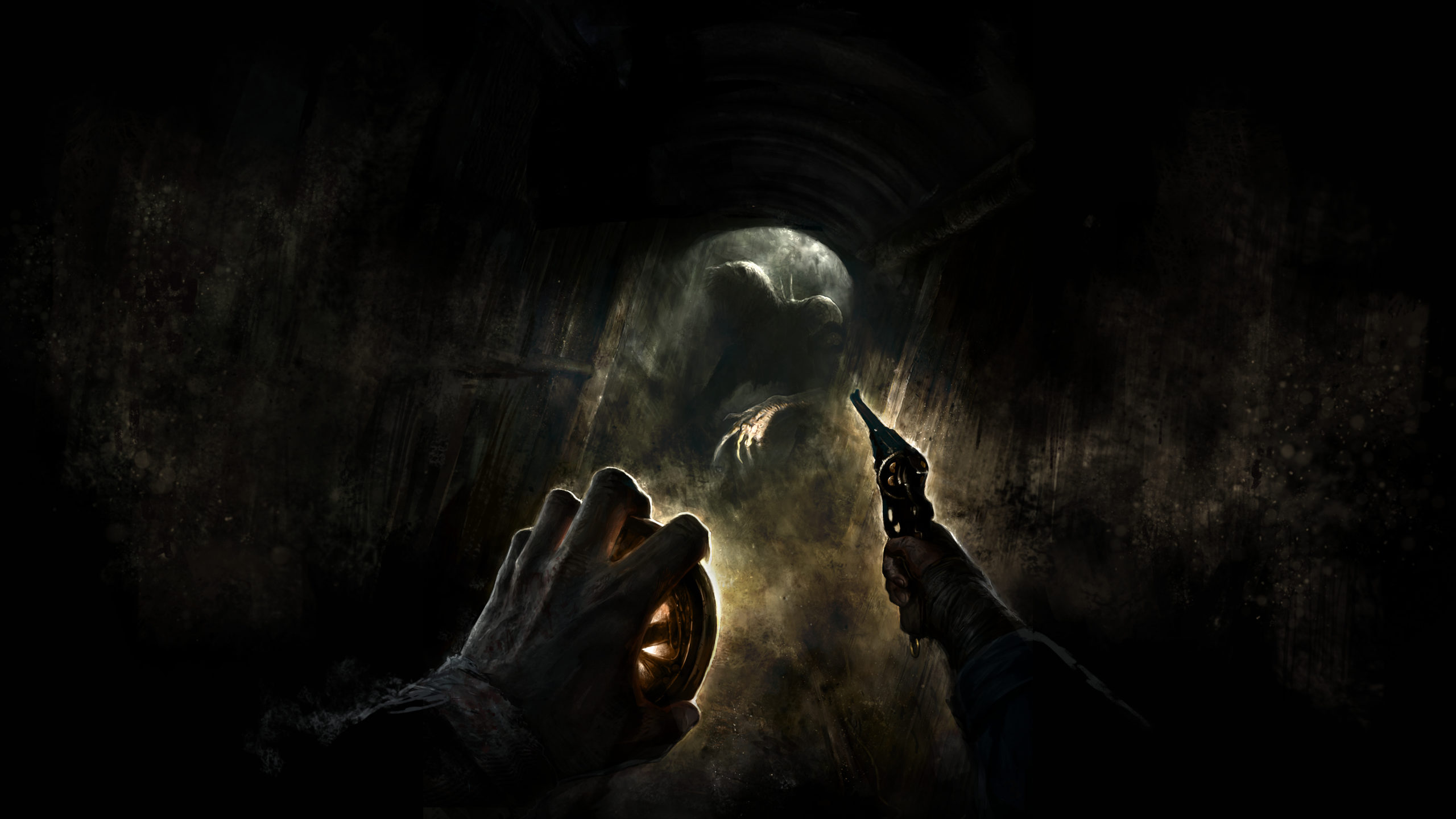Amnesia Rebirth (PS4) Review – Escape Your Memories
Amnesia, eh? Forgot why you clicked this link? Was it to see if Amnesia Rebirth was a horror game worth your time and effort? Don’t be afraid, relax, Finger Guns have got you covered.
A first-person horror puzzler, Amnesia Rebirth refuses to conform to many gaming tropes and accepted mechanics, sometimes to its benefit, but a lot of the time, to its detriment. To its credit, it prominently features a heavily pregnant protagonist, something I don’t think I’ve ever seen in a video game and it’s not just for show – she and her pregnancy are integral to the plot. But the actual structure, minute to minute gameplay and control options leave me completely nonplussed and, in some cases, baffled.
Running some seven hours or so if you are a savant at barely-explained PC-game-type puzzles, but more like ten to twelve hours for the rest of us, Amnesia is at times both engrossing and deathly boring, uncontrollable and frustrating. Many are calling it survival horror, but it abandons almost every trope of the survival horror genre, and I won’t be referring to it as such.
Disclaimer: I have not played any of the previous Amnesia games, so this review will not tell you how the games link, but instead provide an opinion as a newcomer. Please also remember that video games and opinions are subjective – this game strikes me as one that some people will love and others loathe.
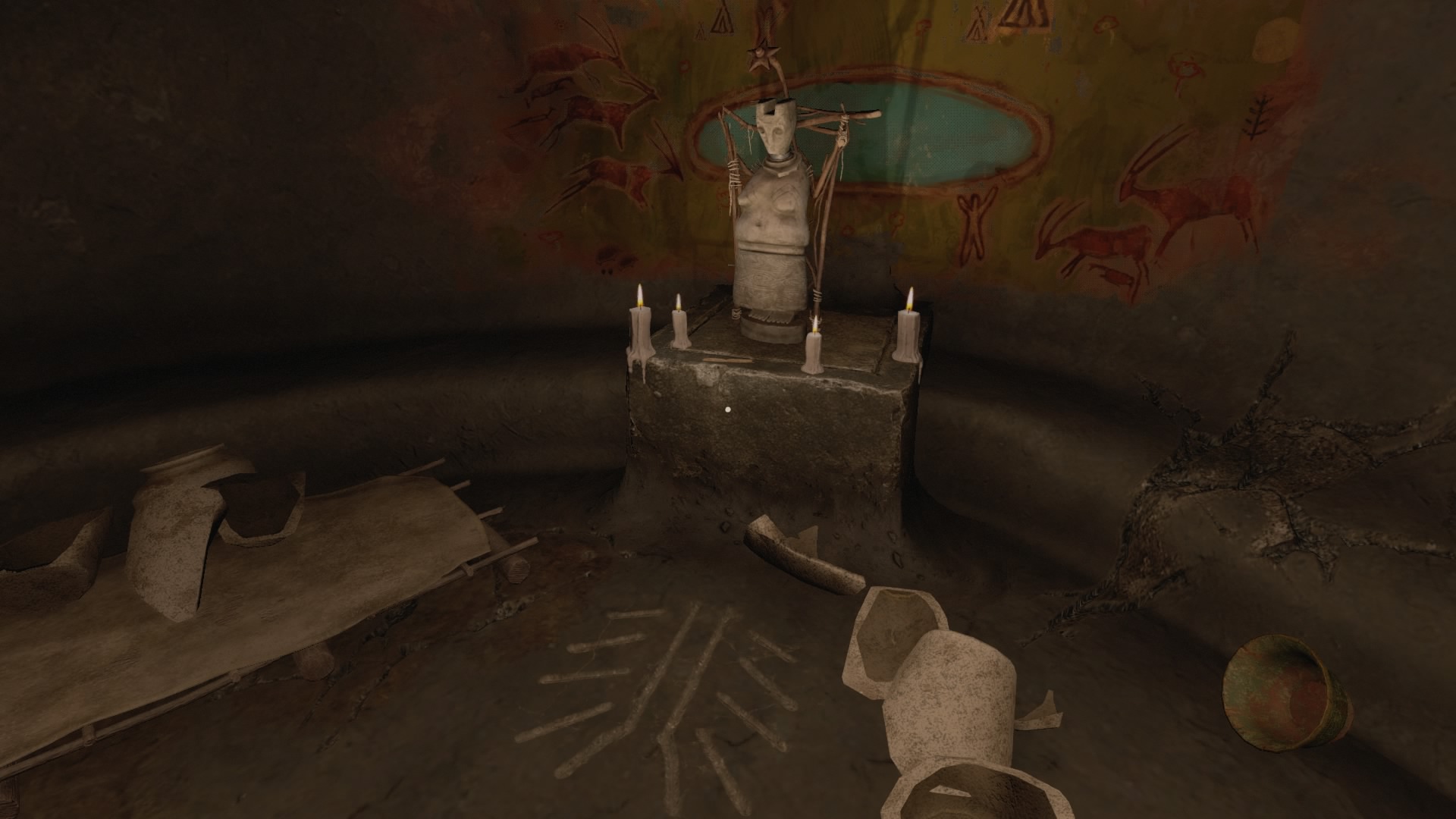
So, a lead character with amnesia, possibly the dullest of all narrative tropes. While it allows us as the player and observer to discover and experience plot and exposition along with the protagonist, it is also very boring, trite and unoriginal.
Amnesia Rebirth begins with a terrifying plane crash. You play as Tasi Trianon, a young female anthropologist. During the cutscene and foreshadowing the rest of the game, you are unable to control the camera. You can see through the port windows a strange flashing, like there are two different worlds out there; one as it should be and the other, a land of darkness and statues and storms. You wake to find yourself deep in the Saharan desert in the wreck of the plane with no real memories of how you got there. Stranger still, you seem to have already been outside the plane with the other survivors.
The desert and the opening locations will likely lull you into a false sense of security – a game about piecing together the crash and aftermath, right? Wrong. You quickly find a device that opens portals to another world, and your adventure will be spent half in one world and half in the other, leaning heavily towards the alien world in the latter half. It’s almost two different games – one the tale of survival in the desert, the other a supernatural horror in an alien landscape.
Credit where its due, it is interesting to have the protagonist be pregnant. I haven’t seen this in a game before, and it was kind of unique. We should have more games that seek to use characters that can tell stories we are less used to experiencing, and by the end that part of the plot is probably the most fleshed out and understandable.
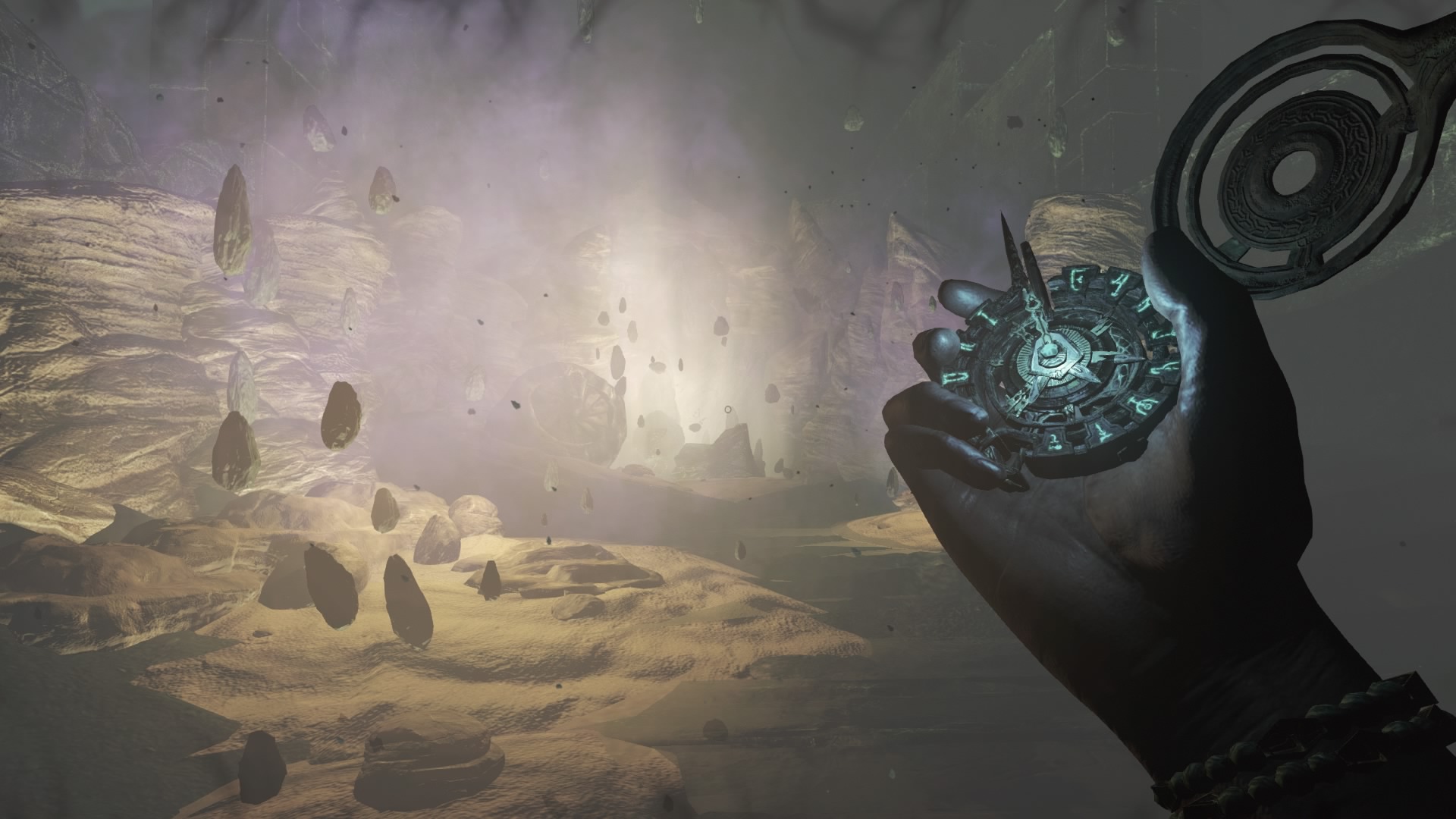
That said, the rest of the plot is all over the place, and does little to make you care for any characters, including Tasi, or her plight. A lot of the time it’s just a series of pseudo scenes and puzzles, that feel somewhat disconnected from each other, linked only by falling unconscious in one and waking up in the next, relying often on the conceit of not knowing how you got there. I became bored by it, rather than scared.
The fact that you can’t remember what happened doesn’t feed into the plot until near the end, leading me to think the amnesiac angle was almost unnecessary.
I think the story could probably have been served better had you not had any of the strange amnesiac elements. I know, it’s in the title, but if instead Tasi had been left on the plane for safety due to her pregnancy, and then the others got into trouble, you could have followed in their footsteps, and discovered all the supernatural elements, without the need for the amnesia. I feel it would have been even more enhanced to have a couple of characters to actually speak to, such as husband Salim on a radio for a while, or others from the plane, maybe friends that Tasi could grow much closer to over the course of the traumatic events. As it is there’s none of this, and the story feels very impersonal for all its intensity. I had little drive to finish beyond the purposes of the review.
By the time it had ended and some interesting things had happened in the final hour, I was long since past the point of caring. The ending of the story does tie some of the strands together and answers a couple of questions, but prepare to be left with many more, not least of which is, what the hell just happened?

Amnesia is made up of just a few core gameplay mechanics none of which really seem to work all that well, and most of which don’t gel with each other. A melting pot of ideas, and one that hasn’t been brought to the boil.
It’s weird that it’s being marketed or reviewed as survival horror. It’s horror sure, but there’s not much in the way of survival mechanics. There’s no real health system, no health bar to manage, no healing items and no weapons (although I’ve played other SH games without weapons). You do have to survive but you do that in any game. The horror element comes from the combination of the fear mechanic, a lot of darkness, a few ghouls and a bunch of rooms strewn with tortured bodies.
It’s really dark, to the point that at the beginning, in an early cave, I had to up the gamma to the max to be able to see anything. The normal balanced brightness settings were just pitch black, at least on my TV. I upped it to max and I could actually move around the cave. After a while the supernatural elements appear and you are able to see in the dark (with a sort of purple filter), but in the dark, Tasi will get scared, and the fear mechanic will kick in with its tendrils of darkness encroaching from the edges of the screen. The fear mechanic rarely kills you – you have to actually be attacked by one of the rare ghouls to actually die. It just kind of makes you hallucinate, throwing a few jump scares at you.
This means that, in the darkness that permeates most of the game, you’re constantly wanting or needing to use matches or a short-lived torch to light fires and lanterns along the way. While it feels interesting for an hour, it gets old.
When you are caught by a ghoul, there is a strange struggling control where I think you are required to press in or just frantically twizzle the thumb-sticks to escape. I’m convinced I’ve completed the game without understanding how that was actually supposed to work.
Then there’s death. You don’t really die in Amnesia Rebirth. You just sort of reset, and your arms get covered in veins and darkness like in Hellblade: Senua’s Sacrifice, and then you are back at the last autosave point. Often you are reset in a place you haven’t quite been to yet, or helpfully (unhelpfully) a little bit past the area you died on. You have no save function of your own, only the autosave of the game. I ended up sometimes just dying and letting the game spawn me further on. This is a frankly bizarre mechanic to keep in a game. That said, you won’t want to die that often, not least because the reset function takes too long to animate, showing you your veiny arms again and again.
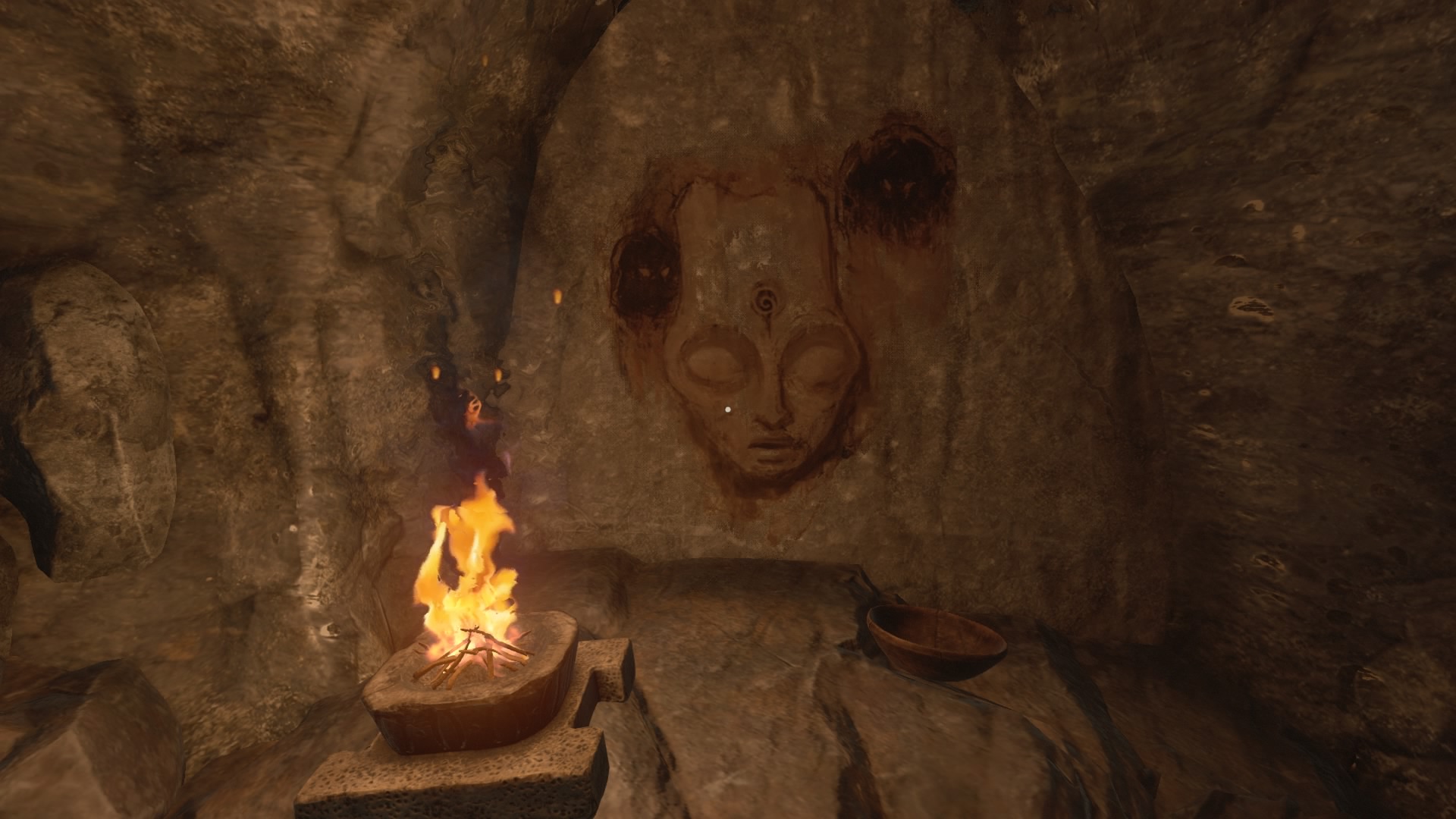
Amnesia features a number of puzzles that, though they aren’t particularly clever or difficult, become fiendishly difficult because of the lack of any explanation or instructions. You are left to figure them out largely on your own, or with a single picture on a wall in a dark room. They are the type of puzzles that would have fit in a very retro early 3D PC game – place this random item in a specific spot you haven’t seen for hours type puzzles.
At least early on Amnesia does that slightly infuriating PC game thing where loads of items can be picked up and rotated but to no apparent purpose. I lost count of the amount of pointless items I looked at. One of its core ideas is to look at items and experience memories, getting a disembodied voice or amateur explorer’s sketch to indicate a memory, but I ended up dreading them and stopped picking much up.
Lastly for gameplay, the control scheme is a little counter-productive, deciding to ditch tried and tested generation-long accepted control schemes, such as L3 for run, or a face button to pick things up. Instead its L2 to run which is rarer, and hold R2 to pick things up, which never became natural to me the entire playthrough. Instead, I would press X and jump before I picked up almost every item. The clunky controls feel like a PC game of some 20 years ago; the strange way you interact with objects wouldn’t have been strange then, and the game feels more like Myst and other point and clicks, rather than a survival horror, or Resident Evil. There is also a whole face button dedicated to feeling your baby kick, which is bizarre, but at least part of the plot.

In the outdoor desert areas, Amnesia’s graphics were sometimes quite lovely, full of sandy vistas and terracotta villages, however in the alien world and in the interiors, I found the graphical fidelity downgraded a lot and the game felt like a last gen title. The alien world in particular and its ghoulish denizens felt distinctly sharp-edged.
The sounds and music of Amnesia never really struck me as interesting or memorable, beyond the ever-present bubbling fizzing noise that is the fear encroaching on your psyche. That one was really annoying.
Amnesia Rebirth is only really scary when you are being pursued. The flashing subliminal images within the Fear mechanic work to force you into a state of unease, trying to dash through dark sections, and run afoul of a few jump scares, but in an of itself is just your screen fuzzing up.
I experienced a few glitches, like falling through the floor of a cave at one point, and a light puzzle that worked even though the light was going through the floor. Or the time when I got thrown by a ghoul that follows you around and stuck in some rocky scenery so completely that I had to reload the last autosave. That reloaded with me still stuck in the floor, and in order to carry on, I had to force the game to ‘Fear’ me to death, which thankfully respawned me somewhere else.
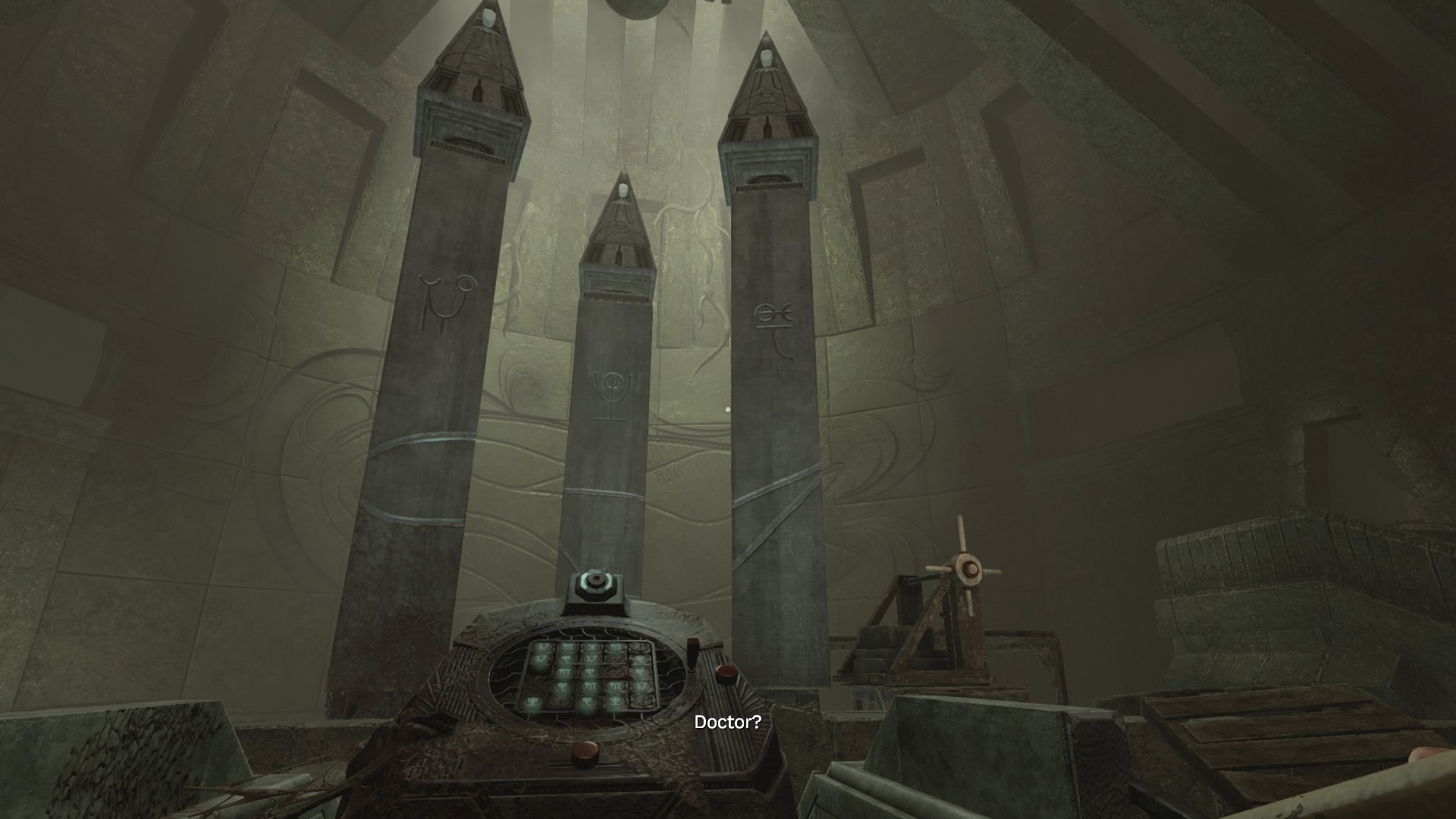
Amnesia Rebirth is a frustrating experience. While it should be commended for featuring a pregnant woman in a lead role, it won’t really satisfy those looking for a narrative thriller/horror, because its story is weak and muddled and there’s not a whole lot to be scared of. It’s likely to alienate those looking for a survival horror because it has so little in the way of coherent survival mechanics or actual consequences, and for modern gamers its control scheme will feel strange and outdated.
Its story sets up one pretty hackneyed premise and then pulls the rug out from under you to become something completely different which is interesting, but comes with barely any explanation. It lacks much in the way of player agency – most of the game feels like it’s on rails.
With a muddled story that leaves much unanswered, and a series of half-baked mechanics that feel a decade out of date, it’s hard to recommend Amnesia Rebirth as a way to satisfy your scares this Halloween. You’ll more than likely want to forget all about it.

Amnesia Rebirth is available now on PC and PS4 (review system).
Developer: Frictional Games
Publisher: Frictional Games
Disclaimer: In order to complete this review, we were provided with a promotional copy of the game. For our full review policy, please go here.
If you enjoyed this article or any more of our content, please consider our Patreon.
Make sure to follow Finger Guns on our social channels –Twitter, Facebook, Twitch, Spotify or Apple Podcasts – to keep up to date on our news, reviews and features.



